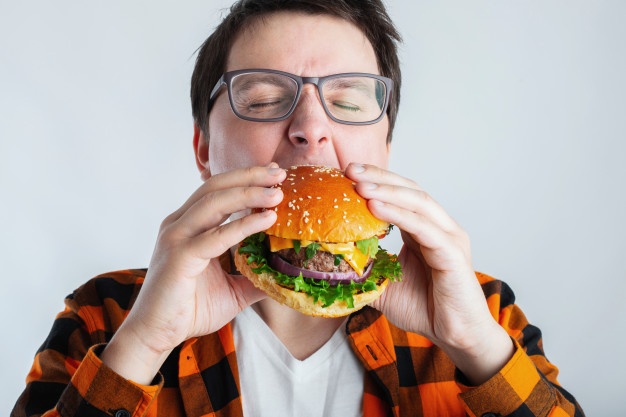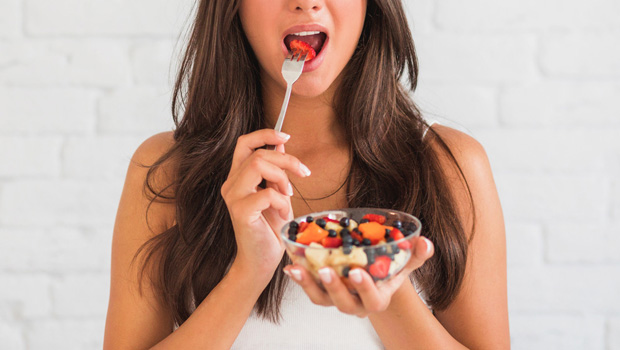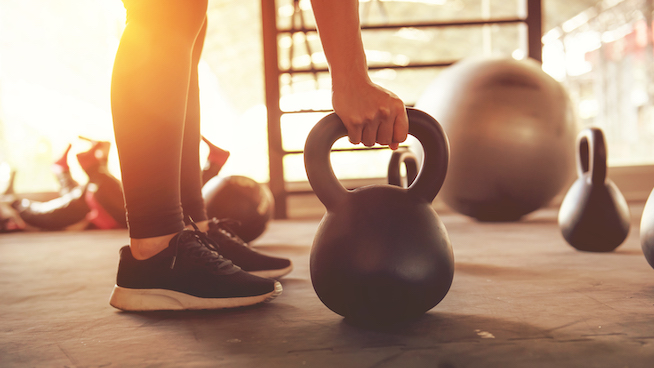Losing weight doesn’t have to mean giving up everything you love. In fact, the all-or-nothing approach—cutting out pizza, sweets, or your evening glass of wine—can backfire fast. It might work for a week, maybe two, but eventually the cravings hit hard, and when they do, many people throw in the towel altogether.
The truth is, weight loss doesn’t require extreme sacrifice. Instead, it’s about moderation, awareness, and finding a lifestyle you can stick with. You can enjoy the foods you love and still see results—if you're smart about how and when you eat them, and if you pair those habits with consistent physical activity.
Let’s take a look at how to shift your mindset, tame your cravings, and build a plan that actually works long term.
Method 1 – Changing Your Eating Mindset
1. Ditch the Guilt Around Food
Food isn't good or bad. It's fuel, plain and simple. Labeling foods as “cheat meals,” “guilty pleasures,” or “weaknesses” only encourages shame-based eating habits. Instead of viewing a slice of chocolate cake as a dietary failure, see it for what it is—a treat. And that’s okay. The key is in the portion. One small slice enjoyed mindfully won’t sabotage your goals. Two oversized pieces eaten in a guilty blur might.
2. Give Yourself Permission to Enjoy Everything
Restricting certain foods often leads to bingeing later. You may think cutting out pizza or beer completely will speed up your weight loss, but full restriction usually ends in frustration. Instead, allow yourself to have your favorite foods occasionally. Balance them with healthier options throughout the day. If you know you’ll have pizza for dinner, pair it with a big salad or some fruit earlier. This flexible mindset keeps you satisfied and makes your eating habits easier to maintain.
3. See Food as Fuel, Not a Reward or Enemy
Your body needs food to function—just like a car needs gas. Viewing food through this lens helps you avoid overthinking every meal. It also encourages smarter portion control. Try this strategy: as you eat, rate your hunger on a scale from 1 (starving) to 10 (stuffed). Stop eating around a 5 or 6—when you’re comfortably satisfied but not full.
Another trick? Prioritize the most nutritious parts of your meal first (like the veggies or lean protein), then check in with your hunger before finishing everything on your plate.
4. Focus on Getting the Right Nutrients
When your body is lacking vitamins, minerals, or healthy fats, it tends to crave fast fixes—usually processed or sugary foods. By eating a wide variety of nutrient-rich meals, you reduce those urges naturally. Fill your plate with fiber-rich fruits and vegetables, whole grains, and quality protein sources. And if your diet is limited, a multivitamin can help fill in any nutritional gaps.
5. Don’t Fear Fat—Just Choose Wisely
Fat isn’t the enemy. In fact, healthy fats are essential for brain function, vitamin absorption, and staying full between meals. The key is to eat the right kinds of fats—like those in avocados, nuts, seeds, olive oil, and fatty fish. On the flip side, avoid trans fats (often listed as “partially hydrogenated oils”), which have been linked to heart disease, high cholesterol, and other serious health risks.
If you struggle with eating fatty foods, consider adding a high-quality fish oil supplement to your routine. Just be sure it’s mercury-free and stored in a cool place to maintain freshness.

Method 2 – Controlling Your Appetite
1. Learn to Tell Hunger from Boredom
It’s easy to confuse boredom with hunger—especially when food becomes your default activity. Snacking in front of the TV or grazing while scrolling through your phone might feel satisfying in the moment, but it’s one of the fastest ways to derail your goals. Start paying closer attention to why you’re eating. Are you really hungry, or just looking for something to do?
Try replacing idle snacking with something that keeps your hands busy—like sketching, puzzles, or even chewing gum. When it’s time to eat, focus fully on the experience: turn off the screens and be present with your food. The more mindful you are, the easier it becomes to recognize when you’re actually full.
2. Address Emotional Eating Head-On
Many people eat not out of hunger, but to cope with feelings—stress, sadness, boredom, even joy. Before you reach for a snack, pause and ask: “Am I really hungry, or just feeling something else?”
Keeping a food journal can be a powerful tool. Write down what you eat, how much, and what you were feeling at the time. Patterns often emerge quickly, and once you see the emotional triggers, you can start finding healthier ways to respond to them. For example, if stress makes you crave sweets, try walking, journaling, or calling a friend instead.
A journal also helps you plan. If you know you want to indulge in ice cream later, balance it out with a lighter lunch. This kind of planning allows flexibility while still keeping you on track.
3. Drink Water First
Our brains sometimes mistake thirst for hunger. Before reaching for a snack, have a large glass of water and wait 15 minutes. You may find that what felt like hunger disappears entirely. Staying hydrated also helps with energy levels, digestion, and skin health.
To make hydration easier, keep a reusable water bottle with you throughout the day. Try infusing your water with fruit slices or herbs like mint if you need variety. And if you’re constantly on the go, set reminders to drink at regular intervals.
4. Delay Your Cravings
Cravings don’t usually last forever—they often pass within 20 minutes. If you’re suddenly hit with the urge to eat something unhealthy, try distracting yourself. Go for a walk, do a short breathing exercise, clean a drawer—anything to shift your focus. If after 20 minutes you still want the treat, have a small portion and enjoy it mindfully. It’s better to satisfy a craving responsibly than to let it build until you binge later.
5. Know the Foods That Can Trigger Cravings
Some foods and ingredients are designed to keep you coming back for more. Sugary snacks and artificially sweetened products like diet sodas can confuse hunger signals and make you crave even more. These foods spike blood sugar, provide little nutritional value, and often leave you hungrier than before.
Reducing or eliminating these items from your routine can make it easier to stay in control. When you do indulge, do it with intention and moderation.

Method 3 – Burning Calories
1. Create a Realistic Workout Plan
Once you've set a target for how many calories to consume each day, it's time to design a movement strategy that complements your goals. If you’re planning to keep your favorite foods in rotation, understand that weight loss may be slower—but more sustainable. Extreme diets can trigger quick drops on the scale, but they often come with relapses and burnout. By pairing consistent movement with a more forgiving eating style, you're choosing a long-term lifestyle, not a short-term fix.
To lose around one pound per week, aim for a 500-calorie deficit per day. You can achieve this through a mix of mindful eating and physical activity.
2. Maximize Your Calorie Burn with Interval Training
Exercise becomes even more valuable when you want to enjoy flexible meals. High-intensity interval training (HIIT), which alternates bursts of intense activity with recovery periods, is one of the most efficient ways to burn calories in a shorter amount of time.
For instance, you could alternate sprints and walking during a 30-minute jog or vary the resistance settings on a stationary bike. And if you know a heavier dinner is ahead, consider extending your workout slightly that day. The key is to match your energy expenditure with your intake over time—not obsess over every single meal.
3. Sneak Movement into Your Day
Even if you have a desk job or sedentary routine, there are ways to keep your body moving. Small choices—like using the stairs instead of the elevator, stretching between tasks, or walking during lunch—add up.
If your workplace allows it, consider a standing desk to reduce the hours spent sitting. Some people even use walking desks to stay active during work hours. It’s less about one intense session at the gym and more about staying lightly active throughout the day.
4. Use a Fitness Tracker
Visual tools can be incredibly motivating. Fitness trackers help monitor steps, heart rate, calories burned, and even sleep quality. By seeing your activity stats in real time, you can better understand how much you’re moving—and how much more you might need to do to balance out those favorite meals.
Tracking doesn’t need to be obsessive. It simply helps you make informed choices about your eating and exercise habits, so you’re not flying blind.
5. Don’t Let Setbacks Derail You
Everyone has a bad day—or week. You might skip workouts, overeat, or just feel off-track. The worst thing you can do is quit entirely. One misstep doesn’t erase your progress. In fact, understanding that missteps are normal is what makes your approach sustainable.
Even if you overindulged and consumed several hundred extra calories, it likely didn’t undo much of your progress. Get back to your routine the next day with no guilt, just renewed focus.
A Closer Look: The 5 Bite Diet Plan
One unconventional approach to weight loss that's gained attention in recent years is the 5 Bite Diet. Designed by Dr. Alwin Lewis and introduced in his book Why Weight Around?, this method focuses not on calorie counting but on drastically limiting the number of bites you take at each meal.
According to the plan, you skip breakfast (except for black coffee), then limit both lunch and dinner to just five bites of food—whatever kind you choose. That’s roughly 10 to 12 bites per day in total. The idea is to mimic the effects of gastric bypass surgery without going under the knife.
The 5 Bite Diet promises fast weight loss—some reports suggest up to 6 or 7 kilos per week. However, this type of very low-calorie diet comes with notable concerns.
What You Can Eat
The diet allows you to eat any foods you like, as long as the quantity remains extremely limited. It also recommends including at least one protein-rich food per day, like eggs, fish, or legumes. Because of the reduced food volume, you’ll also need to take multivitamins and omega-3 supplements to avoid nutritional deficiencies.
Should You Exercise on This Diet?
Exercise is discouraged while following this plan, due to the extremely limited caloric intake. If you do choose to stay active, it should be light, low-intensity movement only—such as stretching or gentle walking. Moderate to intense workouts may be unsafe due to low energy levels and reduced nutrient intake.
Possible Side Effects
Like many extreme diets, the 5 Bite Diet isn’t without risks:
-
Nutrient deficiencies due to low volume of food
-
Slowed metabolism, which could increase the risk of weight regain
-
Digestive problems and potential gallstone formation
-
Possible disordered eating patterns
If you do choose to try this method, it should only be for a short term and ideally under medical supervision. Long-term, a more balanced and nutrient-dense approach to eating is far safer and more sustainable.

Final Note:
Losing weight doesn't mean cutting joy out of your meals. The key is building a lifestyle that balances satisfaction with smart choices. Whether it’s savoring your favorite pasta in smaller portions or walking during your lunch break, each small step adds up. Stay consistent, be kind to yourself, and don’t be afraid to make room for the foods you truly love. That’s how real change lasts.













